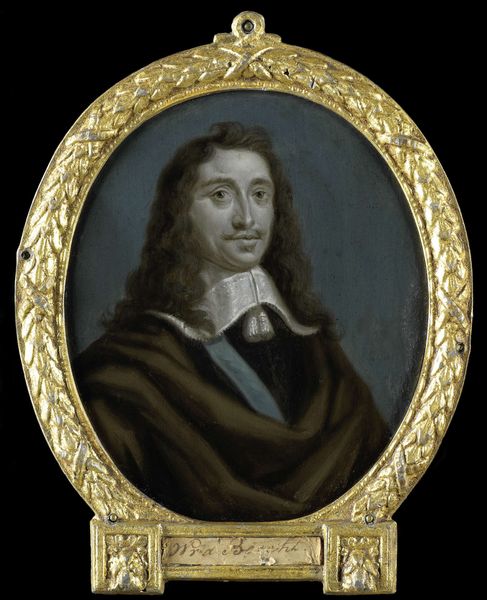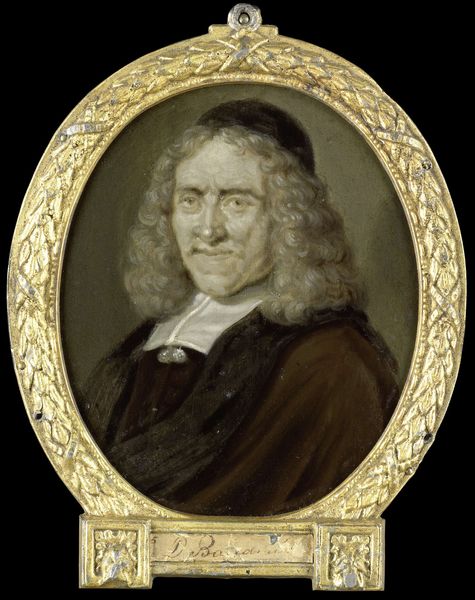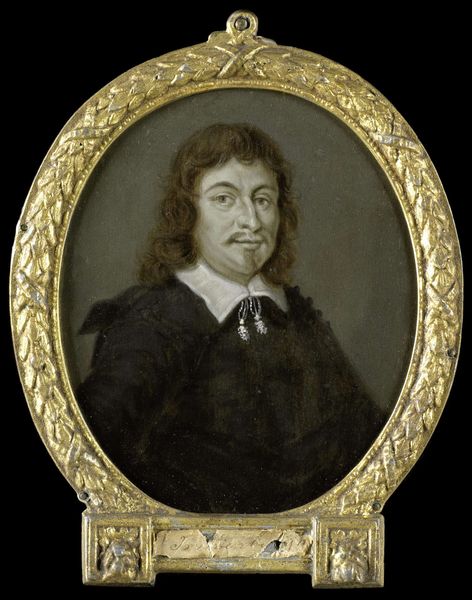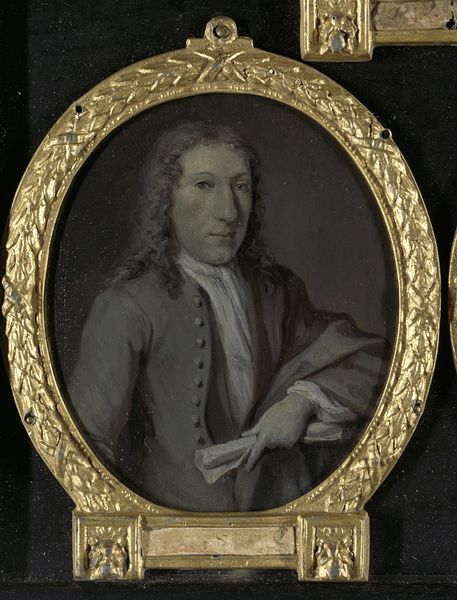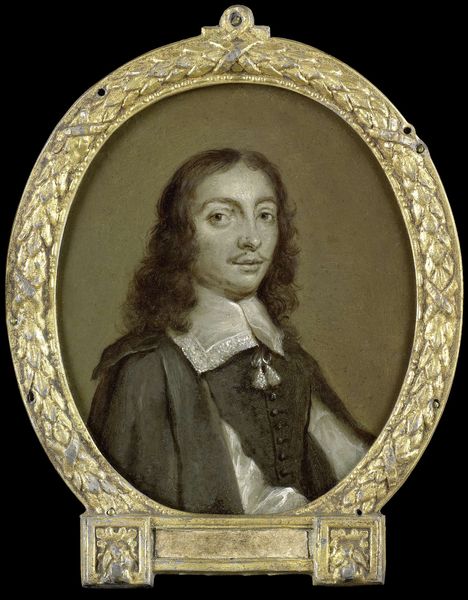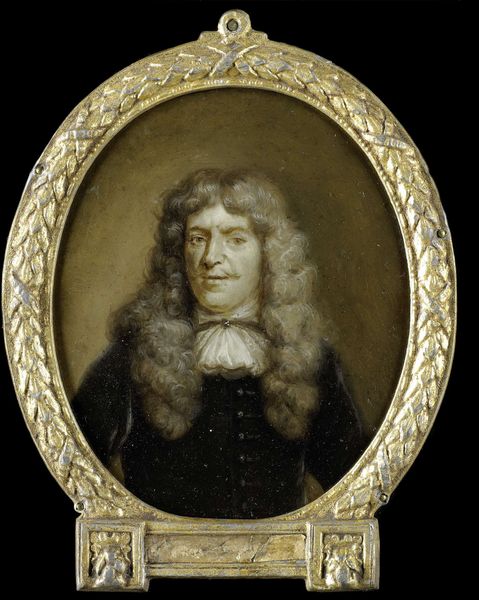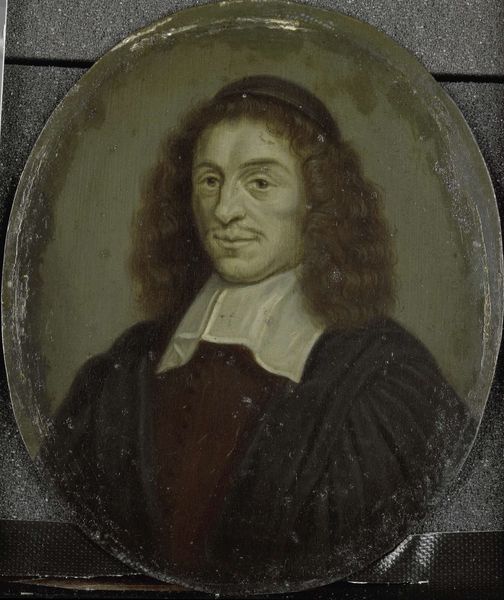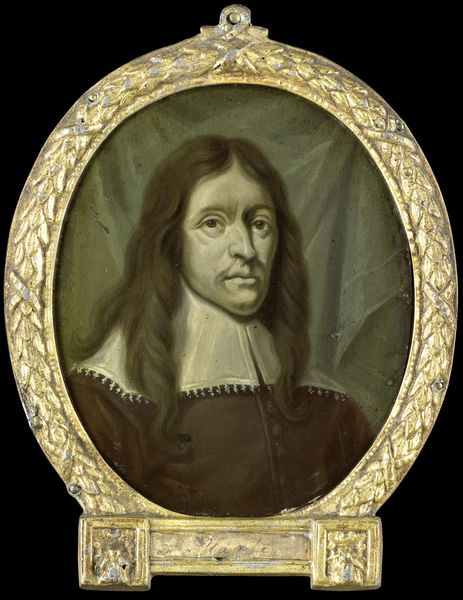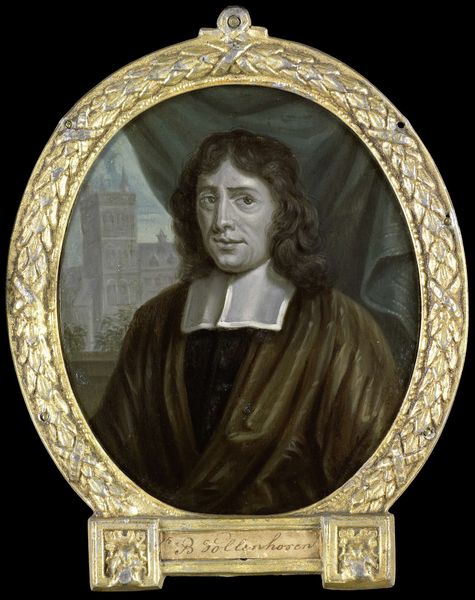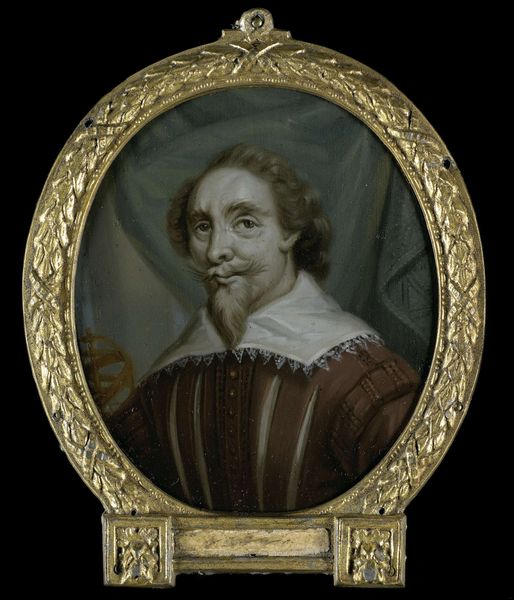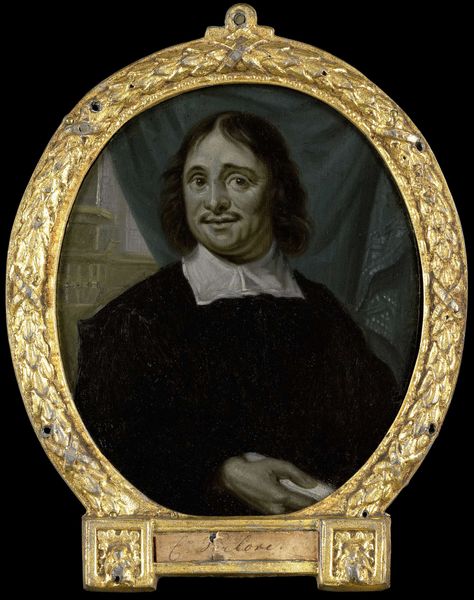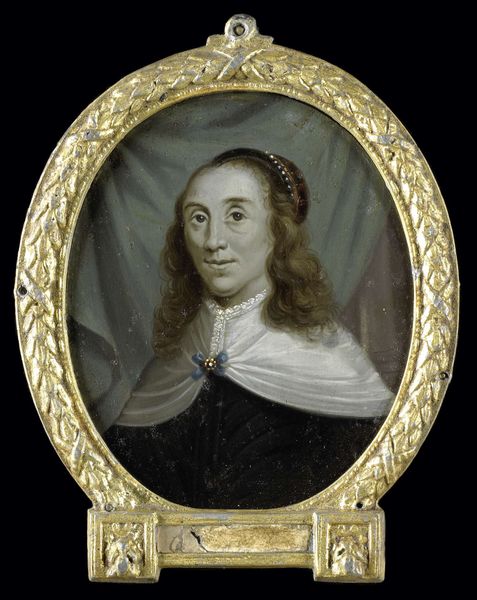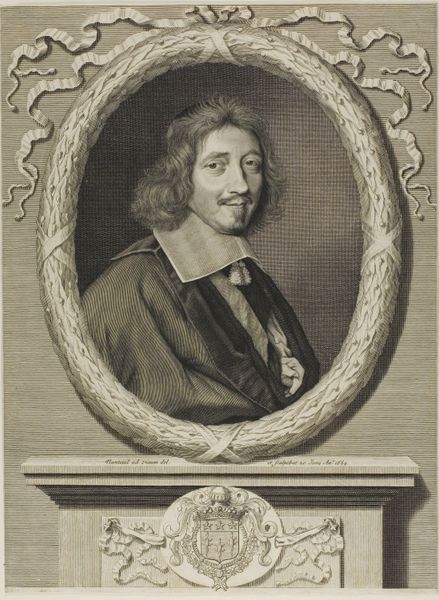
painting, oil-paint
#
portrait
#
baroque
#
painting
#
oil-paint
#
sculpture
#
strong focal point
#
framed image
#
history-painting
Dimensions: height 11 cm, width 9.5 cm, height 41.2 cm, width 47.4 cm, depth 1.6 cm
Copyright: Rijks Museum: Open Domain
Curator: This exquisite miniature portrait, likely rendered in oil, depicts Johan de Witt, Grand Pensionary of Holland. The piece is attributed to Jan Maurits Quinkhard and believed to have been created sometime between 1723 and 1771. Editor: The scale is striking – almost jewel-like. And the tight oval composition gives the impression of contained power, even reserve. There’s a deliberate suppression of ostentation through its constrained materiality; gold frame notwithstanding, this feels very measured. Curator: Absolutely, there's an intentional symbolism in that restraint. De Witt was a powerful figure, advocating for republicanism, but always aware of the shifting political sands. The tight frame emphasizes his controlled demeanor. His gaze, though direct, lacks the bravado we might see in, say, a military leader's portrait. Editor: Indeed. And consider the oil paint itself—the pigments used would have been meticulously ground and mixed, a laborious, skillful undertaking. There's a level of craft here, beyond the simple representational task. It speaks of social position, yes, but also of dedicated labor. What pigments grant those subtle tonal variations across his face? Curator: The somber tones likely served a purpose. In Dutch art, darkness can represent contemplation, wisdom gained through experience. De Witt, as a statesman, was no doubt keen to project an image of thoughtful leadership, of inner strength rather than outward displays of wealth. It aligns with republican ideals shunning monarchical splendor. Editor: I keep returning to that gold frame, though. It sets a definite limit but offers itself, too, as both the boundary of the man's image, but also, to a certain extent, a golden barrier built for him in life. It is literally and figuratively precious; something created to be handled carefully, owned, or gifted, but always regarded as a valuable article. Curator: Perhaps it speaks to the enduring power, despite his tragic end. Though no longer politically viable during the rampjaar or Disaster Year, Johan de Witt became an indelible, controversial figure whose legacy as one of Holland's eminent statesmen is hard to diminish. Editor: Thinking about its context only reinforces this work as both image and precious object – loaded with the labor and the implications of Dutch mercantile expansion. Curator: I see it as the carefully cultivated persona of a historical figure mediated through paint, frame, and history.
Comments
No comments
Be the first to comment and join the conversation on the ultimate creative platform.
